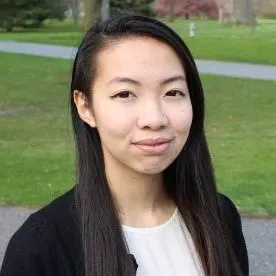A Hub of Creativity
Swarthmore bolstered its commitment to creativity and interdisciplinarity earlier this year with the opening of the Makerspace & Wood Shop.
Located on the ground floor of Beardsley Hall and also offering a digital fabrication lab, the space is raising excitement—and a common question.
“Yes, it’s open to everyone, for whatever,” says Russell Prigodich, Makerspace & Wood Shop manager, who brings a sculpture background to the role. “There’s almost no limit to what you can create here.”
With nine student employees trained to monitor both the wood shop and digital fabrication lab, the space invites all students, faculty, staff, and alumni to the space for about 60 hours each week. It provides machines like 3-D printers, a 3-D scanner, and a laser cutter.
The space is already a hit with engineering students using the 3-D printers, sculpture students incorporating woodworking, and art majors prepping for their senior shows.
Wendy Wu '19, an art and biology major from San Francisco, Calif., lauds the efforts that went into the new space, which allowed the Department of Art to offer its first woodworking sculpture course in many years.
"The wood shop has transformed massively, and it has become a much safer, more organized and creative space," says Wu. "I loved the woodworking sculpture course, and wood since became one of my main material concentrations for my senior art thesis. I also work with 3D printers and laser cutters for my thesis work, so the Makersapce is extremely crucial to my creative development over the years."

"The wood shop has transformed massively, and it has become a much safer, more organized and creative space," says Wendy Wu '19.
Last spring, Makerspace staff also collaborated with Team Tricycle for the annual SwatTank competition, helping the students print caps for the digital elements of their automated trash-sorting machine.
But Prigodich is quick to remind community members that they can come to the Makerspace to work on their own projects, whatever interests them—whether it’s designing something in CAD or printing a model or building a piece of furniture.
“The overarching goal is to be interdisciplinary,” Prigodich says, “open to and encouraging these cross-platforms of ideas” from people working together from different areas.
“People seem really excited there’s a open space that they can come to and make something,” he adds, “which is something new for the campus.”
Although the Makerspace tools are often used by students with interests in a particular subject, traditional applications are “just the tip of the iceberg,” says student monitor Elizabeth Flores ’19, a biology major and education minor from Pomona, Calif.
“I am passionate about uncovering the ways 3-D printing technology can be used to support the student learning in STEM subjects like biology,” she says. “Through the Makerspace, I have the opportunity to explore the intersections of education, biology, and computer-aided design in ways that will support my future as an educator.”
Also building excitement for the space were open houses held in April and September, which drew hundreds of community members. Attendees got to see all that was possible in the space, trying their hand at the machines and viewing the student creations on display.
There’s also a Wednesday night workshop series, which offers a two-hour demonstration on a particular topic, such as welding (with J. Johnson, engineering machine shop supervisor), CAD, or 3-D printing.
“To me, successful growth here would be getting a more diverse range of students coming through the door,” says Prigodich.



